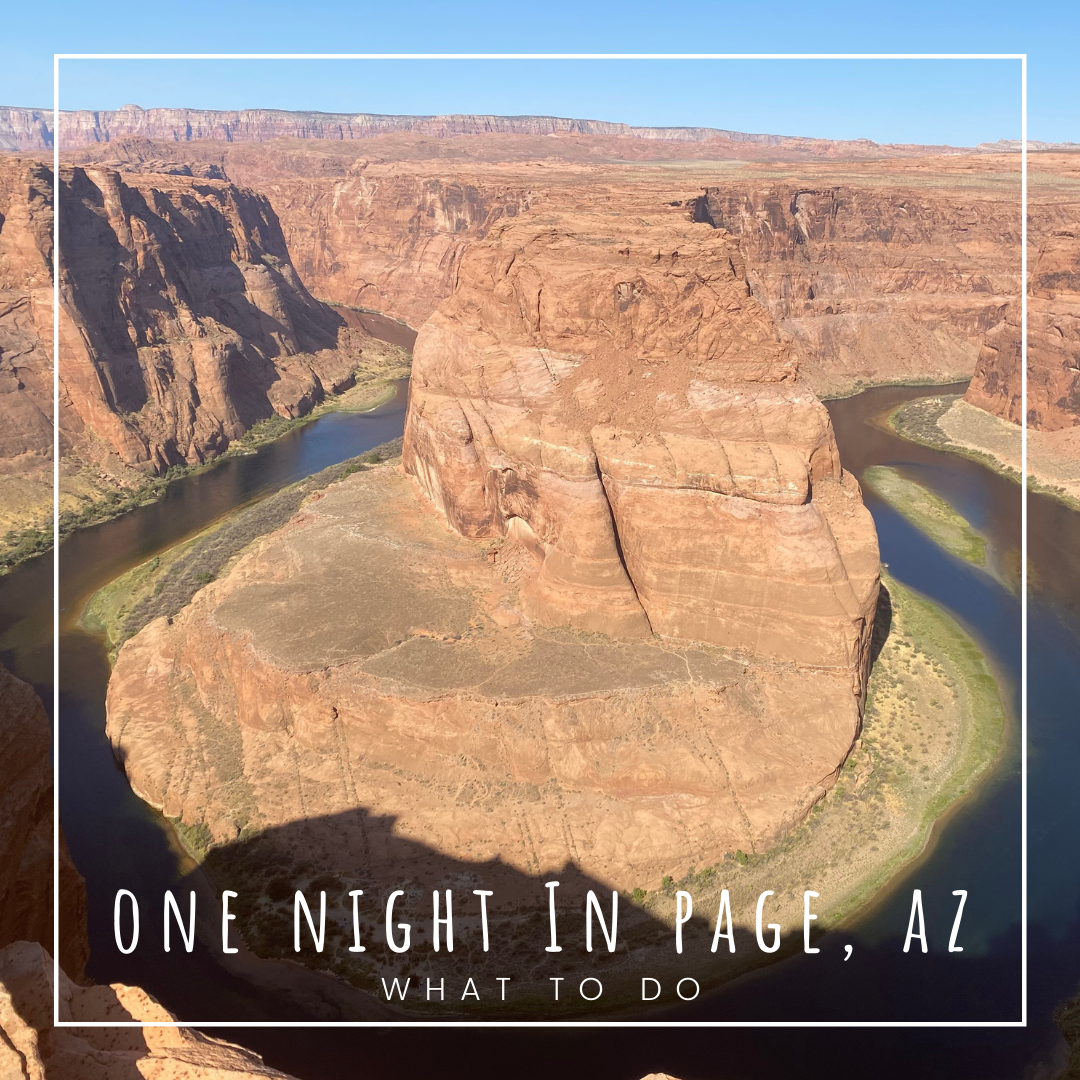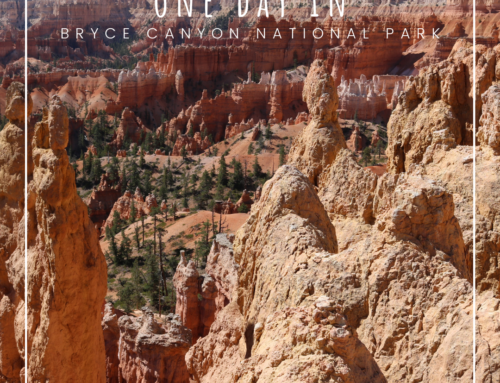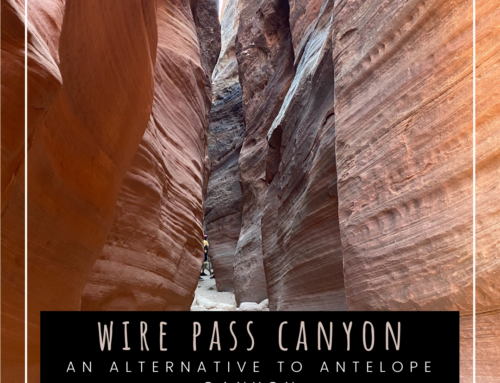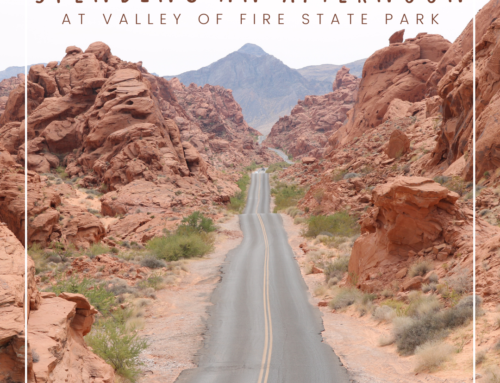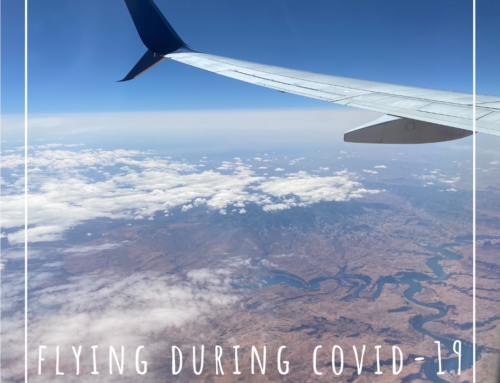After spending the day at Bryce Canyon National Park (read more about that here) it was time to head to Arizona and our first stop was spending one night in Page, AZ. Page is most popular for Antelope Canyon and Horseshoe Bend, however, Antelope Canyon is currently closed due to COVID-19. We arrived and checked into our hotel, Country Inn and Suites by Radisson and the customer service was A+.
After settling in, we grabbed dinner from BirdHouse and it was delicious! It was the first time we had been inside of a restaurant (other than to grab takeout) since March. They had outdoor seating and everyone kept their distance. The food was plentiful and overall, a great first experience back at a restaurant. We went back to the hotel and went straight to bed. Changing time zones multiple times in a few days is no joke!
Spending Time in Page, AZ
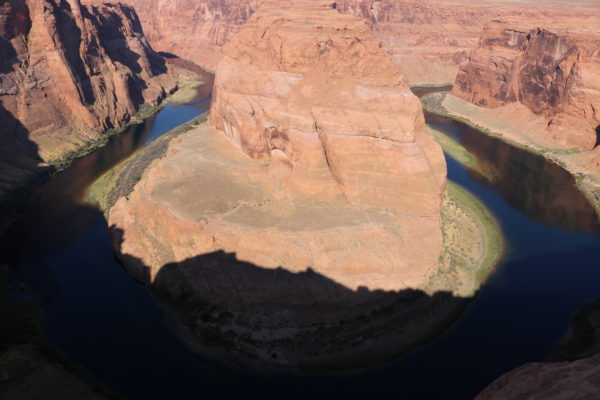 The next morning, we headed to Horseshoe Bend. The entrance fee is $10 and we had no issues with parking. After a 5-10 minute walk on a paved walkway, we arrived at Horseshoe Bend. We arrived mid-morning, but I’d recommend waiting until afternoon when the sun is above or you’ll get shadows casted on your photos like ours.
The next morning, we headed to Horseshoe Bend. The entrance fee is $10 and we had no issues with parking. After a 5-10 minute walk on a paved walkway, we arrived at Horseshoe Bend. We arrived mid-morning, but I’d recommend waiting until afternoon when the sun is above or you’ll get shadows casted on your photos like ours.
After Horseshoe Bend, we drove to view Lone Rock which is a free-standing sandstone rock on Lake Powell that is the namesake of one of the most popular beaches in the Glen Canyon National Recreation Area. The popularity is due to the fact that it is one of the few spots that you can drive directly to the water’s edge and camp right along the shoreline, whether it be with a RV or tent.
From there, we drove to Glen Canyon Dam. Unfortunately, the visitors center was closed, but we were able to walk around outside to view the Dam. Glen Canyon Dam is the second highest concrete-arch dam in the United States, second only to Hoover Dam which stands at 726 feet.
Driving to the Grand Canyon
Usually, you can take Highway 89 to Highway 64 to get to the Grand Canyon, however, that goes through Native American land so it is closed. Instead, we had to drive down towards Flagstaff first so we made the most of it and made some additional stops.
Our first stop was at Sunset Crater Volcano National Monument. We hiked the 1 mile self-guided loop trail that is located at the base of Sunset Crater, but hiking to the summit is not permitted. Sunset Crater erupted about 1085 A.D., however lava is still present to see along the self-guided loop.
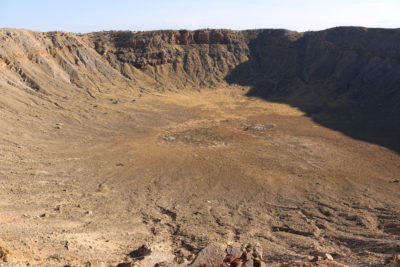 Our next stop was Wupatki National Monument. Wupatki was first inhabited around 500 AD. Wupatki, which means “Tall House” in the Hopi language. The Sinagua pueblo consisted of over 100 rooms and a community room.
Our next stop was Wupatki National Monument. Wupatki was first inhabited around 500 AD. Wupatki, which means “Tall House” in the Hopi language. The Sinagua pueblo consisted of over 100 rooms and a community room.
Meteor Crater was our final stop before the Grand Canyon. It is the best preserved meteorite impact site in the world. In fact, to this day, scientists and NASA use this site for education purposes and training. There is a museum to learn more about meteors and space.

